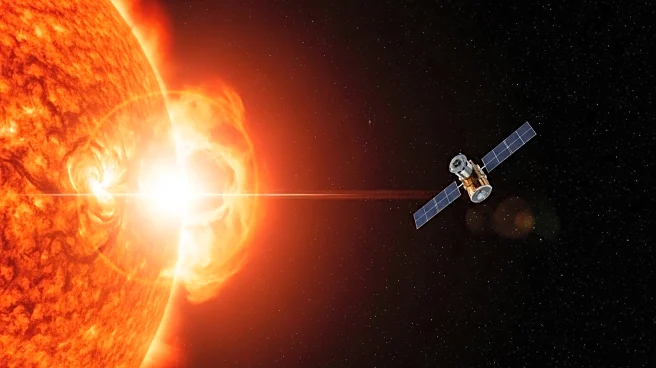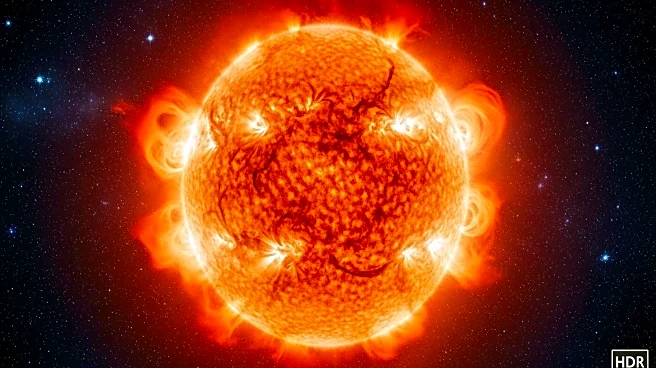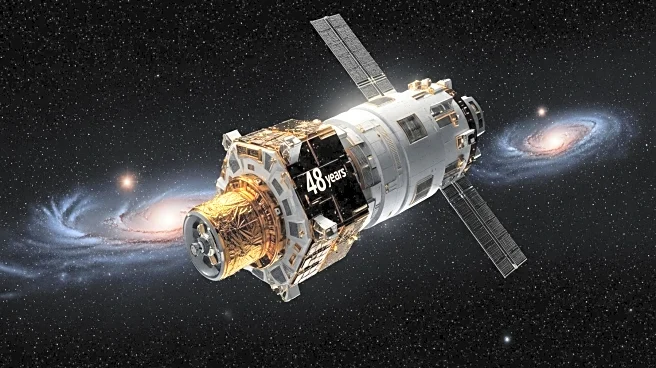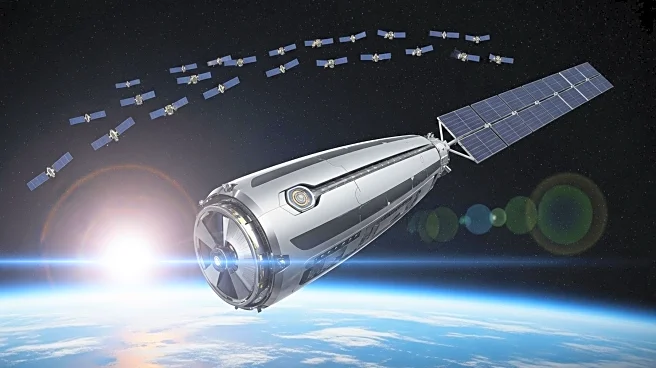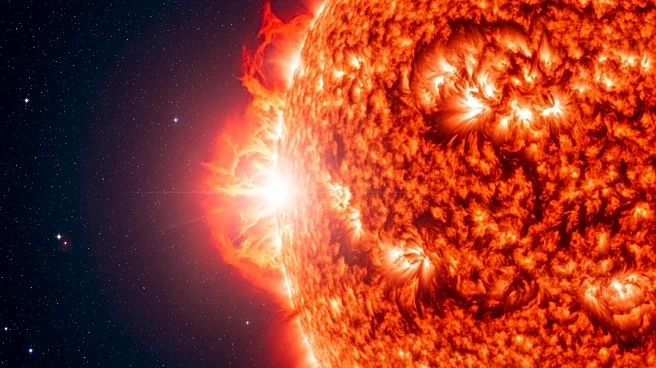What is the story about?
What's Happening?
Recent research has uncovered that solar flares, intense bursts of light and particles from the sun, can reach temperatures far higher than previously estimated. Alexander Russell from the University of St. Andrews in Scotland has highlighted that while the sun's core is around 27 million degrees Fahrenheit, solar flares can exceed 100 million degrees Fahrenheit, potentially reaching up to 180 million degrees. This discovery was made through computer simulations and measurements in near-Earth space, revealing that ions in solar flares can be significantly hotter than electrons, contrary to prior assumptions. The findings have been published in Astrophysical Journal Letters, offering new insights into the behavior of solar flares.
Why It's Important?
Understanding the true temperature of solar flares is crucial for improving the safety and functionality of satellites and protecting astronauts from these powerful eruptions. Solar flares can disrupt satellite operations and pose risks to space missions due to their intense heat and particle emissions. By refining the knowledge of solar flare temperatures, scientists can better predict and mitigate the impacts of these solar events on technology and human activities in space. This research also enhances the scientific community's comprehension of magnetic energy release and its effects on particles, which is vital for developing protective measures against solar flare-related hazards.
What's Next?
The study's findings are expected to prompt further research into solar flare dynamics and their implications for space technology. Scientists may focus on developing more accurate models to predict solar flare occurrences and their potential impacts on satellites and space missions. Additionally, collaborations between physicists and solar scientists could lead to advancements in protective technologies for satellites and spacecraft. As the understanding of solar flares improves, stakeholders in the aerospace industry may implement new strategies to safeguard equipment and personnel from these extreme solar phenomena.
Beyond the Headlines
The revelation of higher solar flare temperatures may influence broader discussions on space weather and its effects on Earth's technological infrastructure. As solar activity can impact communication systems and power grids, this research could contribute to enhancing resilience against solar-induced disruptions. Furthermore, the study underscores the importance of interdisciplinary collaboration in addressing complex scientific challenges, potentially fostering innovation in space exploration and technology development.
AI Generated Content
Do you find this article useful?
